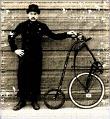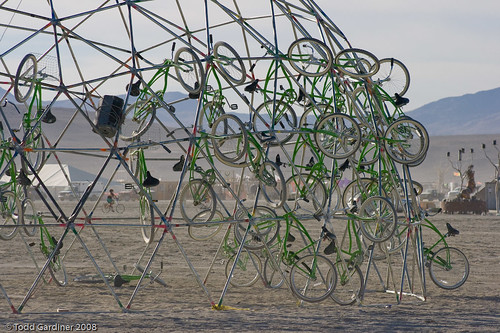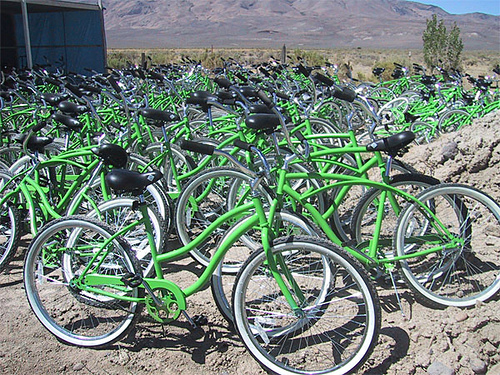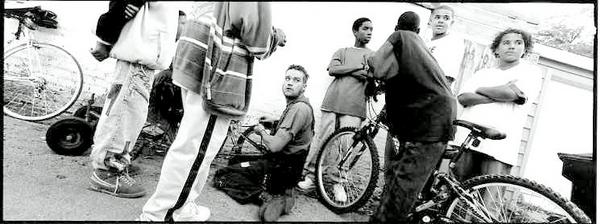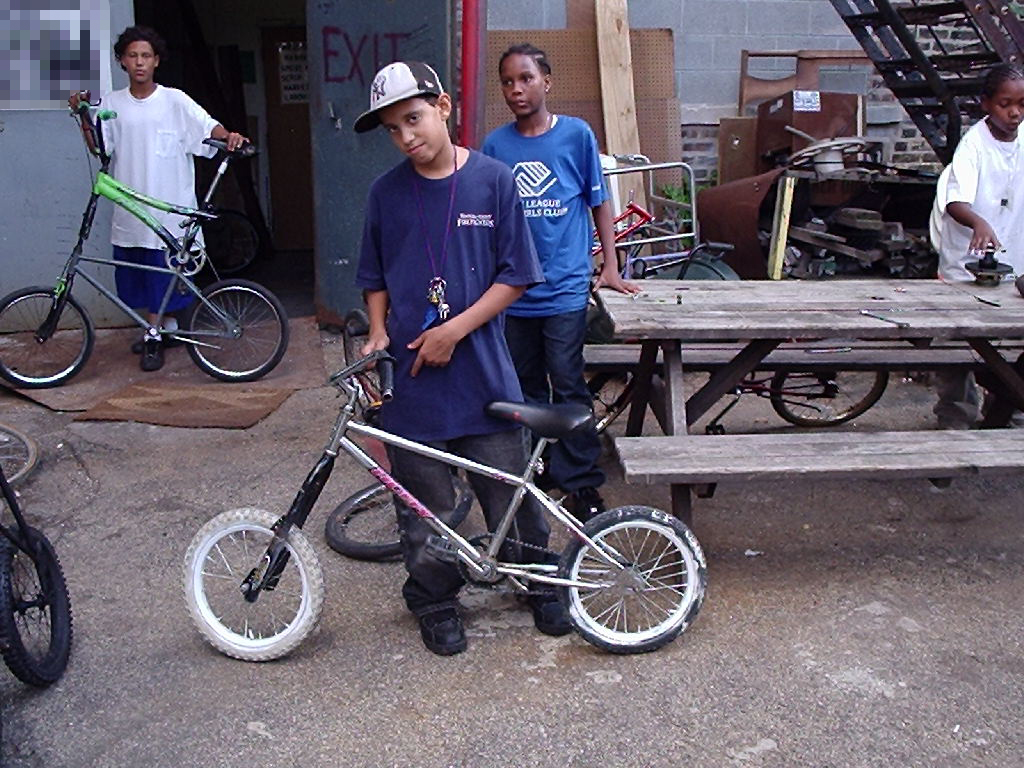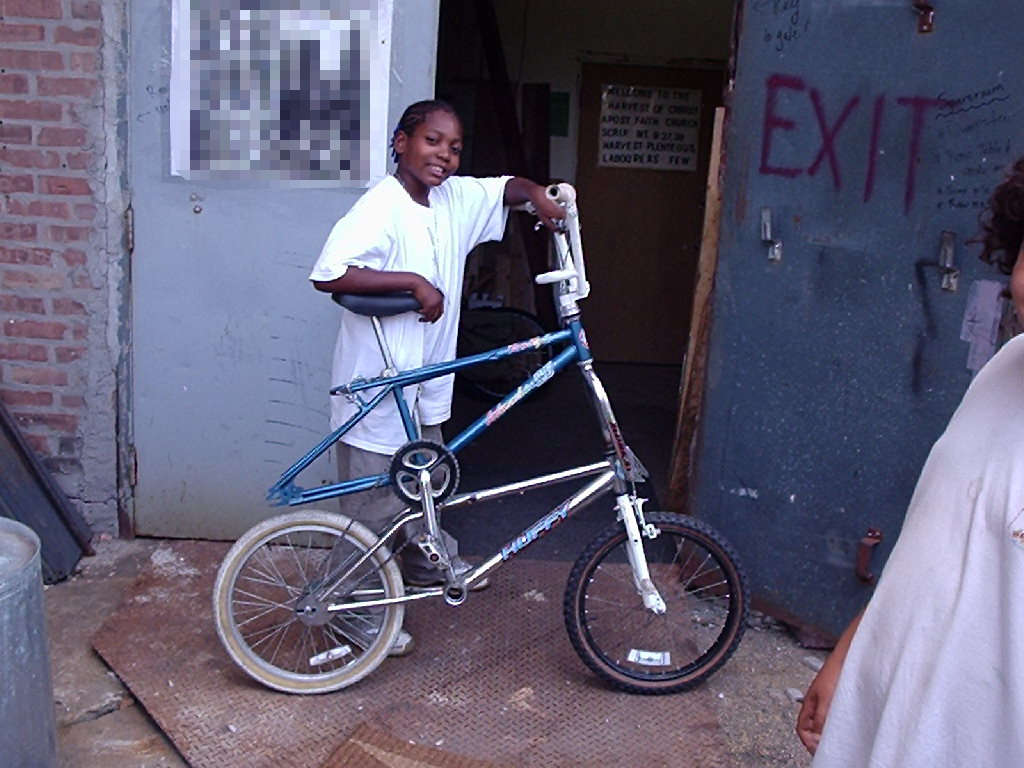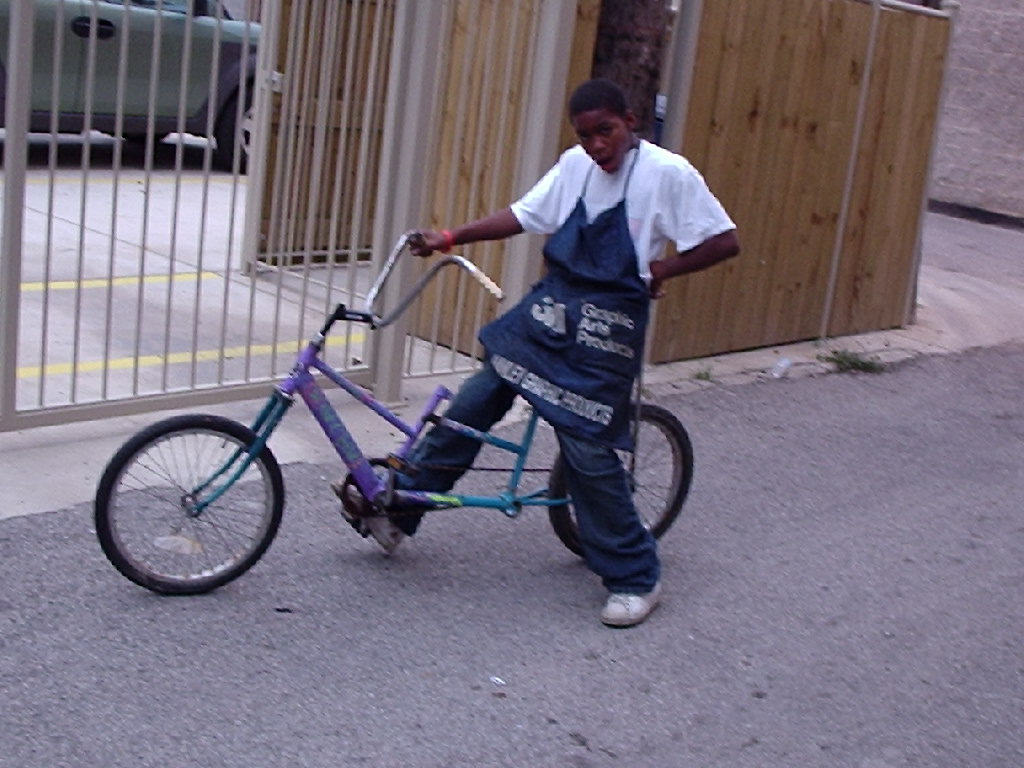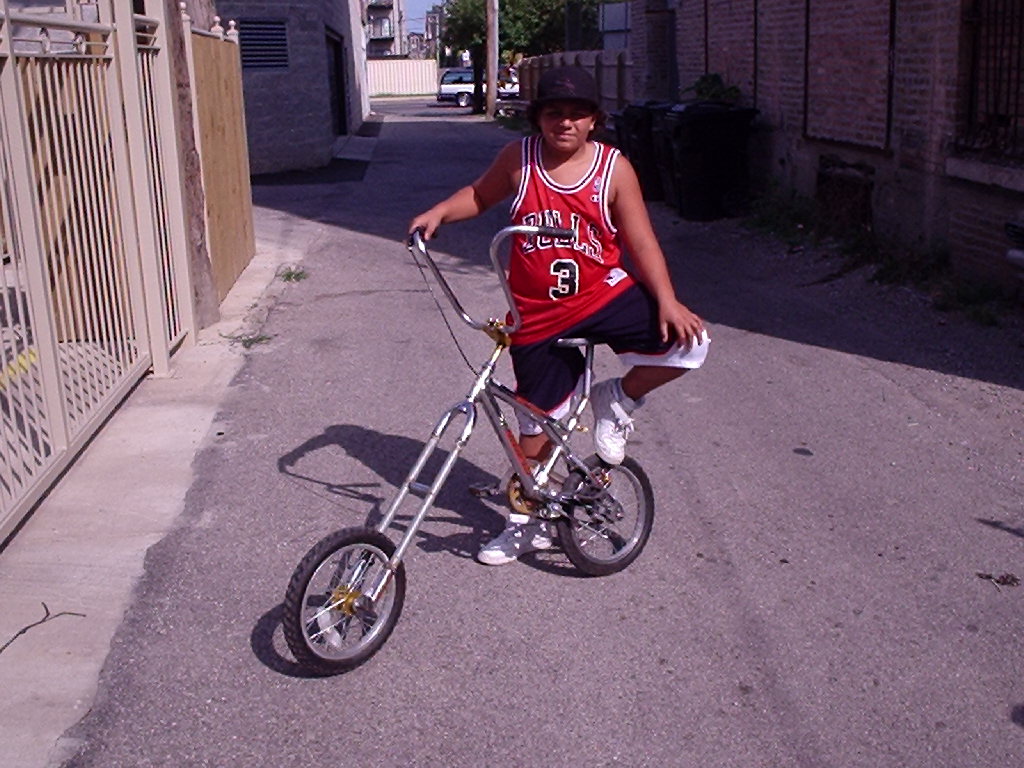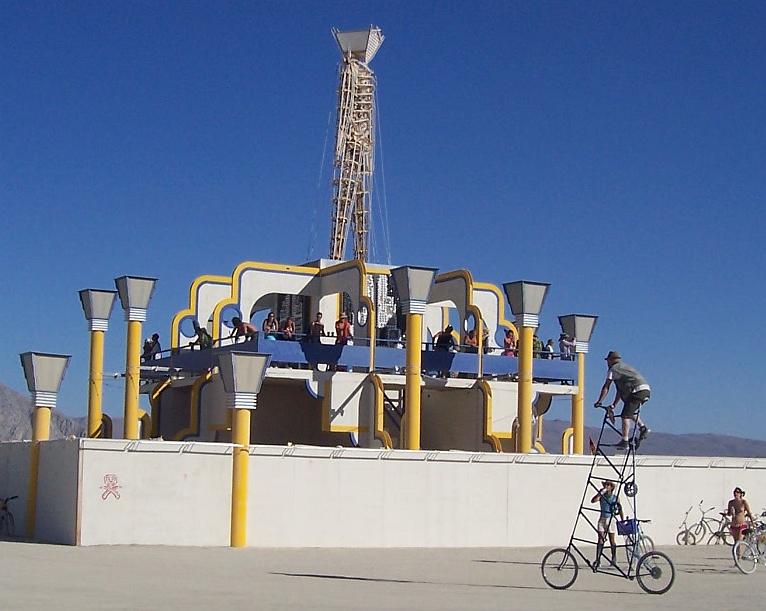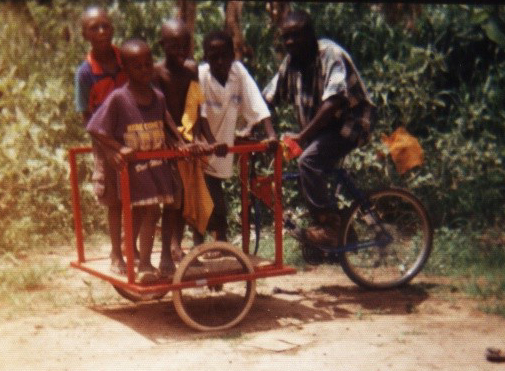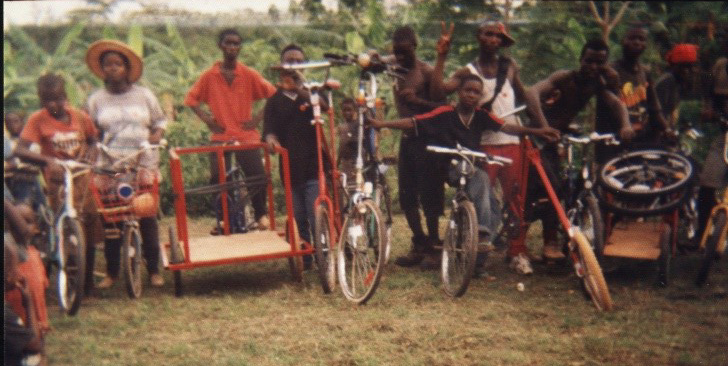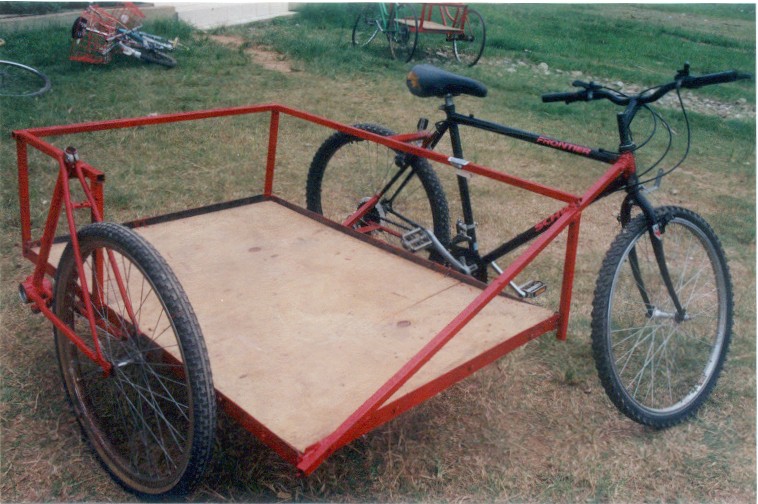Burning Man 2009
Prior to the start of the event, this was the first year where the bike crew had distributed all leftover Burning Man bikes to charity: To the Reno Kiwanis, to the Reno Bike Project, and others. Burning Man likes the idea of shipping some to my African bike project but I would need to raise the funding for the shipping. A shipping container of only costs $4-6,000 to ship to Ghana, but transporting the bikes out of the desert will be expensive as well.
Maintaining and deploying 1000 yellow bikes has become a smooth operation. I was able to get in some time in the metal shop, which may have the world's widest selection of odd metalworking jobs. Among other things I was able to work on this:

...and work on a memorial metal book cover for Tom Kennedy. This was also the first year I worked on the Man itself, on the massive brackets that fit the 4' X 2' wooden sections in its base:
Labels: festival, globalactivism

